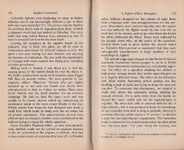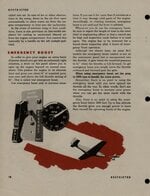BarnOwlLover
Staff Sergeant
To begin with, basing the F-82 off the P-51H was extremely sensible. The P-51H was a high performance escort fighter that had the speed and climb abilities of a genuine interceptor (and can even be set up as a pure interceptor). Hence, why not take the lightweight Mustang that made it to production and use that as the starting point for the F-82?
However, if you wanted a F-82 that was a pure heavy interceptor (the XP-51F/G were biased towards being interceptors with long range escort being a secondary consideration), why not start with the F/G models?
If that's the case, how would it look, how might it perform, and what armament and items would it carry in combat?
However, if you wanted a F-82 that was a pure heavy interceptor (the XP-51F/G were biased towards being interceptors with long range escort being a secondary consideration), why not start with the F/G models?
If that's the case, how would it look, how might it perform, and what armament and items would it carry in combat?


